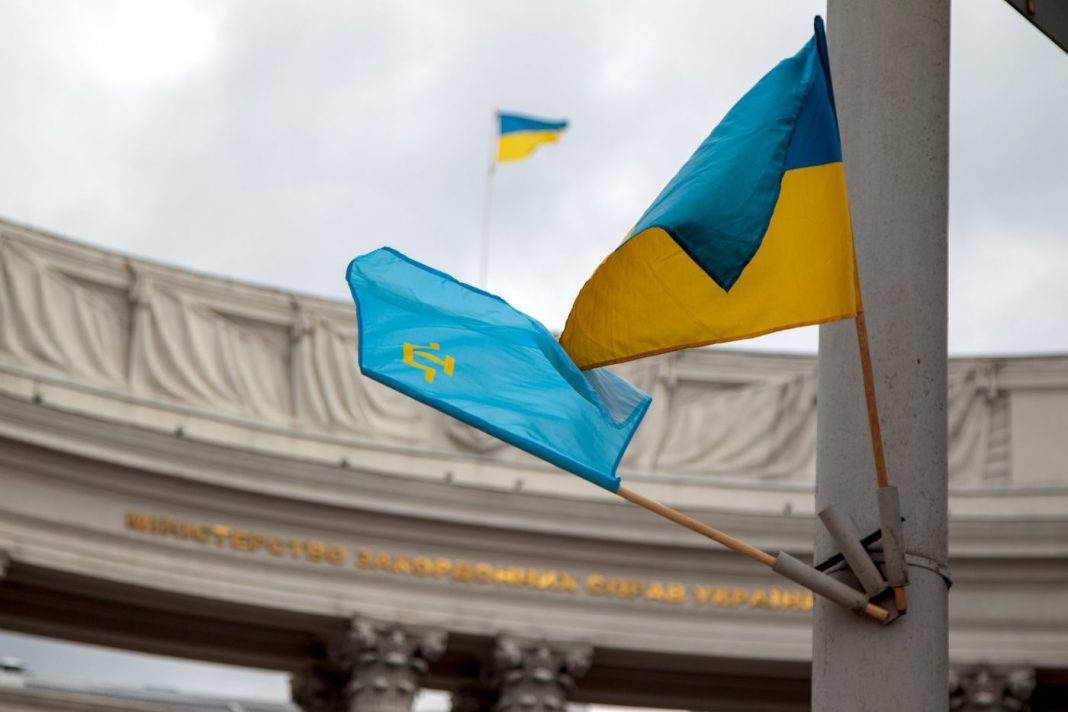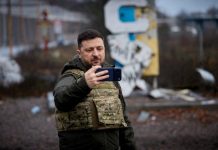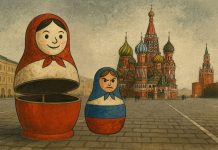Suppression of language is a key part of Moscow’s drive to erase the Crimean Tatar identity as it seeks to colonize occupied Ukraine. Linguists are fighting back.
By Elina Beketova, for CEPA
The Crimean Tatar language is listed as endangered by UNESCO after generations of forced deportations and Russia’s illegal annexation of Crimea, and keeping it alive is at the heart of the struggle to protect the culture, identity, and history of the peninsula’s indigenous people.
Mamure Chabanova was born in Bakhchysarai, southern Crimea, to a family that had been deported to Uzbekistan during the Tatar persecution under Stalin. Growing up under the government in Kyiv, she spoke Crimean Tatar and attended a Crimean Tatar-language school.
What’s happened since is a familiar and sad example of the disruption faced by many born in Crimea. She draws parallels with the Russian Empire’s first annexation of the Crimean Khanate in 1783 — a time of emigration, repression, and cultural erasure, which Crimean Tatars call the “black century.”
Chabanova earned a degree in economics in Crimea in 2014, and later a master’s in Crimean Tatar philology — although her diploma was issued by the Russian authorities after the annexation.

She lived for four years under Russian rule, studying and working in a Crimean Tatar library. At first, Moscow’s attacks on Tatar culture were subtle, and there was a “transition period” during which Russian forces sought to win loyalty.
“Before 2014, we had many youth groups promoting our language, culture, and identity. After annexation, most disappeared,” she said. “Not because they were banned directly, but because people entered survival mode.”
Some activists still tried to do something, Chabanova added. “A mobile app was created — a mini dictionary to learn Crimean Tatar, and a youth group organized small projects.”
The number of Crimean Tatar schools and courses dropped sharply. In 2014, before the occupation, there were 384 courses on the peninsula; now only 119 remain. When parents apply, they are told there are no available places and offered Russian-language courses instead.
In the city of Sevastopol in the 2024/2025 academic year, there were no preschool, secondary, vocational, or additional education institutions in which the language was taught, according to official data from the occupation administration. The Mission of the President of Ukraine in Crimea says families face persecution and are accused of disloyalty if students express a desire to learn.
Chabanova left Crimea in 2018 and moved to Ukraine-controlled territory. She was involved with translation activities and began teaching Crimean Tatar in the local community. Interest in private lessons exploded after Russia’s full-scale invasion in 2022.
Despite the war, and people being unsure if they would survive until tomorrow, “both Crimean Tatars and Ukrainians were writing saying they wanted to learn the Crimean Tatar language,” she said.
Growing demand drove real change in Ukraine, and Crimean Tatar philology is now taught as a degree at several universities. There is also a National Commission for the Crimean Tatar Language, and private tutors and independent courses have popped up across the country.
In 2023, Chabanova joined a language teaching initiative at Lviv’s Ukrainian Catholic University, and hundreds of students have participated in Crimean Tatar courses.
Get the Latest
Sign up to receive regular emails and stay informed about CEPA’s work.
“We have students from Ukraine and all over the world,” she said. “We have people from Prague and Berlin, students from Canada. People of different ages and of different nationalities.”
They include Crimean Tatars who spoke the language at home and want to improve their grammar, as well as those learning it for the first time who want to reclaim a lost piece of their family identity.
“We’ve become like interest-based communities,” Chabanova said. “People learn the language but also reconnect with our culture.”

And the effect is being seen around the world. In Canada, a new academic program at the University of Alberta is focusing on indigenous people, including Crimean Tatars, and Nara Narimanova, who left Crimea for Kyiv in 2014, has started doctoral research in its Native Studies faculty.
Narimanova was born in Uzbekistan into a deported Tatar family before returning to Crimea, where she studied Crimean Tatar and English Philology. Now she’s researching the history and impact of colonialism on toponymy — including how place names were changed to help erase Tatar identity.

“The Crimean Tatar language is a bridge,” she said. “It connects the Kipchak and Oghuz language families, so, for example, Turks and Uzbeks can often understand us — we share common roots. When Turks hear us speak, they say, ‘Oh, you speak Old Ottoman!’”
The language has endured multiple shifts, including from Arabic script to Latin, then forcibly to Cyrillic under the Soviet Union, Narimanova said. In 2021, Ukraine officially approved a Latin-based alphabet for the language, aligning it with other Turkic languages and strengthening ties with strategic partners in the Turkic world, but in Crimea, they continue to use the Cyrillic-based alphabet.
“Cyrillic doesn’t convey all the sounds that are unique to our language, but Latin script can,” she said.
Narimanova wants to continue researching and teaching the language, while Chabanova hopes to publish a self-study guide for anyone, anywhere, wanting to learn.
“Each generation of Crimean Tatars faces repression or exile in one form or another,” Narimanova said. “We are scattered all over the world, but I hope a new generation will continue fighting for our survival, our culture, and our language.”
By Elina Beketova, for CEPA
Elina Beketova is a Non-resident Fellow with the Democratic Resilience program at the Center for European Policy Analysis (CEPA). She is the author of Behind the Lines, a database and article series focused on Ukraine’s temporarily occupied territories. Elina began her career as a journalist in Crimea and later worked as a journalist, editor, and TV anchor for news stations in Kharkiv and Kyiv.
Europe’s Edge is CEPA’s online journal covering critical topics on the foreign policy docket across Europe and North America. All opinions expressed on Europe’s Edge are those of the author alone and may not represent those of the institutions they represent or the Center for European Policy Analysis. CEPA maintains a strict intellectual independence policy across all its projects and publications.





